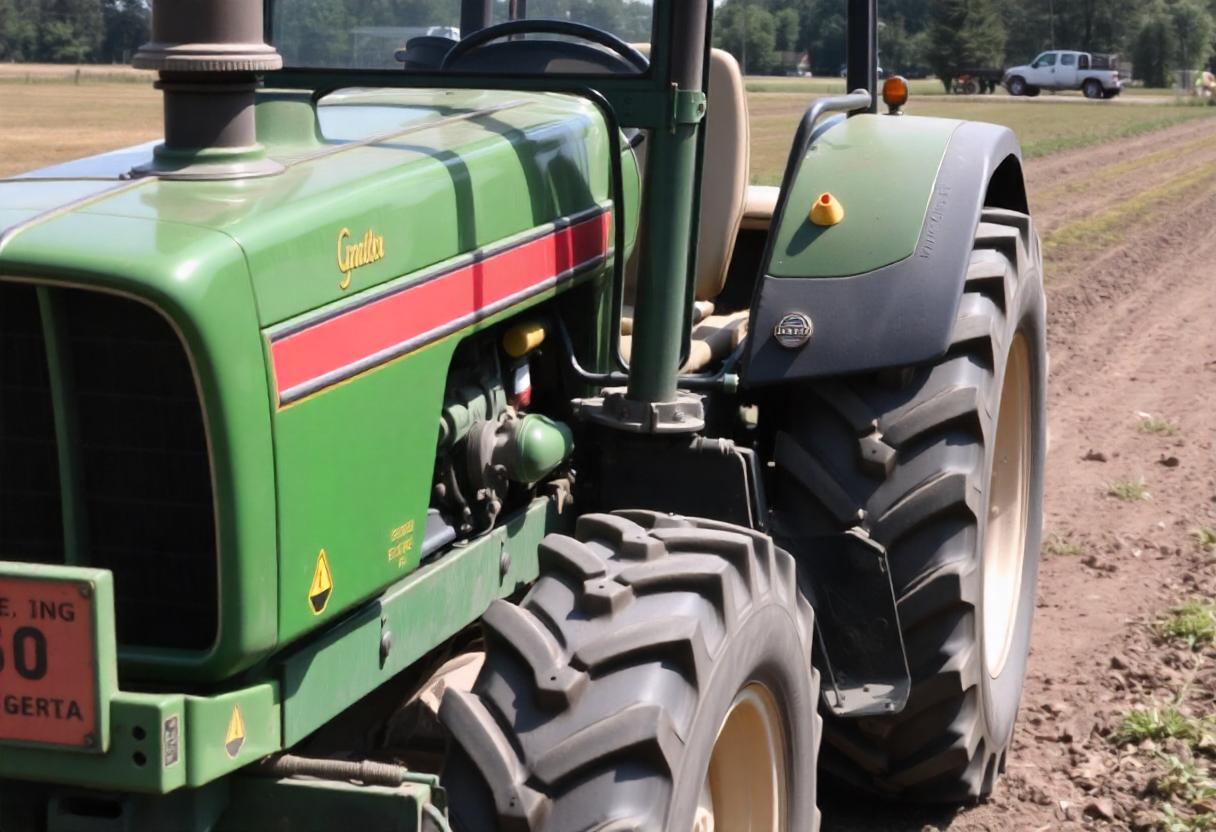
Agriculture tractors are essential machinery in modern farming, playing a pivotal role in various agricultural operations. They are designed to perform a wide range of tasks that enhance productivity and efficiency on the farm. From plowing and tilling to planting and harvesting, tractors are indispensable tools for farmers and agricultural professionals.
Types of Agriculture Tractors
Agriculture tractors come in different types, each suited to specific tasks and farming needs. The main categories include:
- Utility Tractors: These are versatile tractors designed for general-purpose use on farms. They are commonly used for tasks such as plowing, planting, and hauling. Utility tractors typically have a moderate horsepower range and can be equipped with various attachments for different functions.
- Row Crop Tractors: Specifically designed for working in row crops like corn and soybeans, these tractors have adjustable wheel widths to accommodate different row spacing. They are ideal for tasks such as planting, cultivating, and harvesting.
- Compact Tractors: Smaller in size and horsepower, compact tractors are suited for small farms, gardens, and landscaping. They are often used for tasks like mowing, tilling, and hauling small loads.
- Four-Wheel Drive Tractors: These tractors provide enhanced traction and stability, making them suitable for working on rough or uneven terrain. They are often used in large-scale farming operations and for tasks that require significant power and traction.
- Track Tractors: Instead of wheels, track tractors use continuous tracks to distribute weight more evenly, reducing soil compaction and providing better traction on soft or wet ground. They are commonly used for heavy-duty tasks such as deep tillage and large-scale planting.
Key Components and Features
Agriculture tractors are equipped with various components and features that contribute to their functionality and efficiency:
- Engine: The engine is the heart of the tractor, providing the power needed to perform agricultural tasks. Tractors come with engines of varying horsepower, depending on their intended use and size.
- Transmission: Tractors may have different types of transmissions, including manual, automatic, or semi-automatic. The transmission system allows the operator to control the speed and power of the tractor for different tasks.
- Hydraulic System: The hydraulic system enables the operation of attachments and implements, such as plows, seeders, and loaders. It provides the necessary power to lift, lower, and adjust equipment.
- Power Take-Off (PTO): The PTO is a mechanism that transfers power from the tractor’s engine to various implements and attachments. It is used to drive equipment such as mowers, balers, and tillers.
- Cabin: The cabin of the tractor provides the operator with a comfortable and protected working environment. Modern tractors may feature air conditioning, ergonomic controls, and advanced instrumentation for ease of operation.
Applications and Uses
Agriculture tractors are used for a multitude of tasks on the farm, including:
- Tilling and Plowing: Preparing the soil for planting by breaking up and turning it. This helps to improve soil structure and aeration, making it easier for seeds to germinate.
- Planting: Using specialized attachments to plant seeds at the correct depth and spacing. Tractors can be equipped with planters and seeders for efficient planting.
- Harvesting: Assisting in the collection of crops through the use of harvesting attachments. Tractors can be used with combine harvesters, corn pickers, and other equipment to gather and process crops.
- Hauling and Transport: Moving materials, equipment, and harvested crops around the farm. Tractors are often used to pull trailers, wagons, and other transport equipment.
- Mowing and Maintenance: Keeping fields, pastures, and other areas tidy and free of unwanted vegetation. Tractors can be equipped with mowers and brush cutters for this purpose.
Maintenance and Care
Regular maintenance is crucial for ensuring the longevity and performance of agriculture tractors. Key maintenance tasks include:
- Engine Maintenance: Regularly checking and changing the engine oil, air filters, and fuel filters to ensure optimal performance and prevent damage.
- Hydraulic System Checks: Inspecting hydraulic fluid levels and ensuring there are no leaks in the hydraulic system.
- Tire Maintenance: Monitoring tire pressure and tread condition to ensure proper traction and prevent uneven wear.
- Cleaning and Inspection: Keeping the tractor clean and performing routine inspections to identify any signs of wear or damage. Regular cleaning helps prevent buildup that could affect performance.
Agriculture tractors are vital machines that support a wide range of farming activities, contributing significantly to the efficiency and productivity of agricultural operations. Their versatility and ability to handle various tasks make them indispensable tools for modern farming.